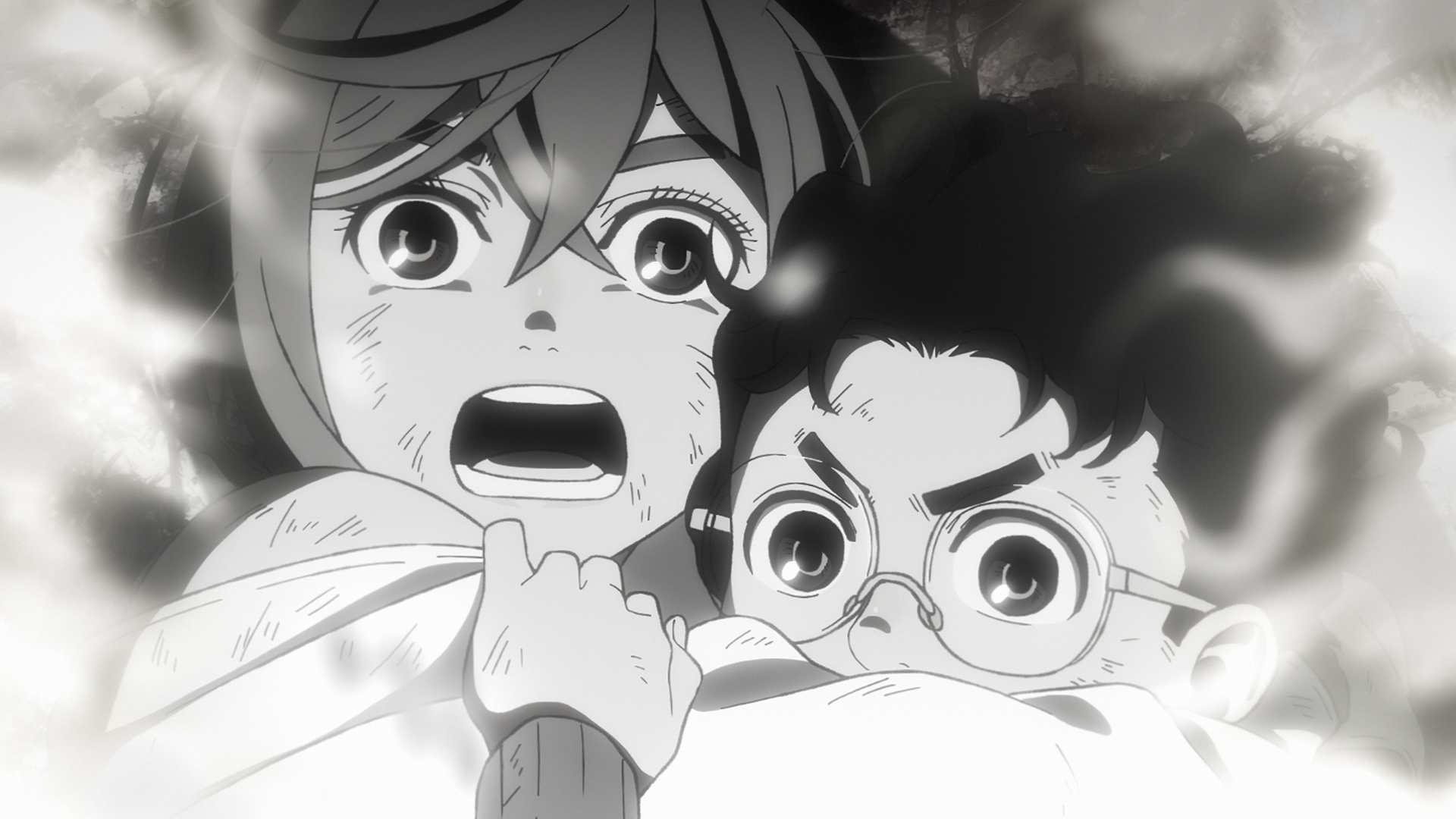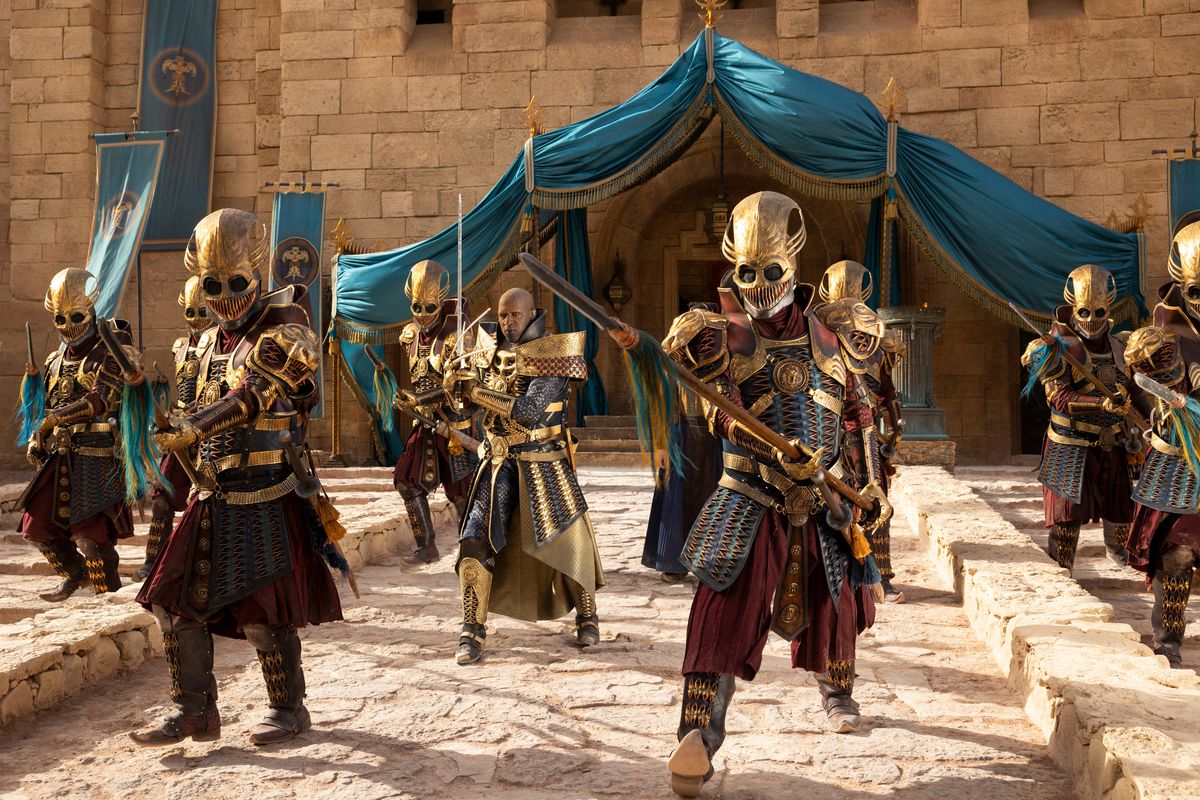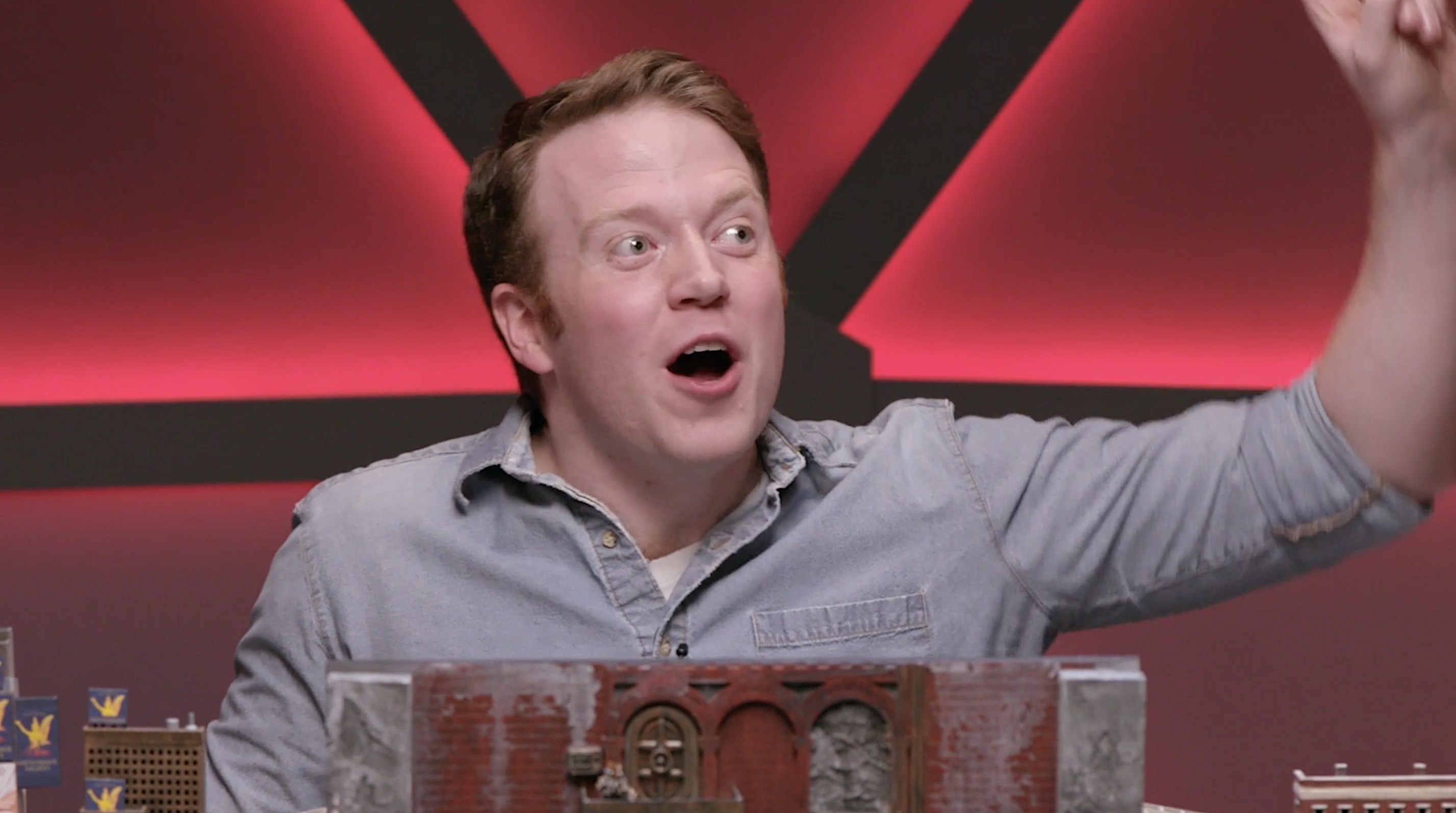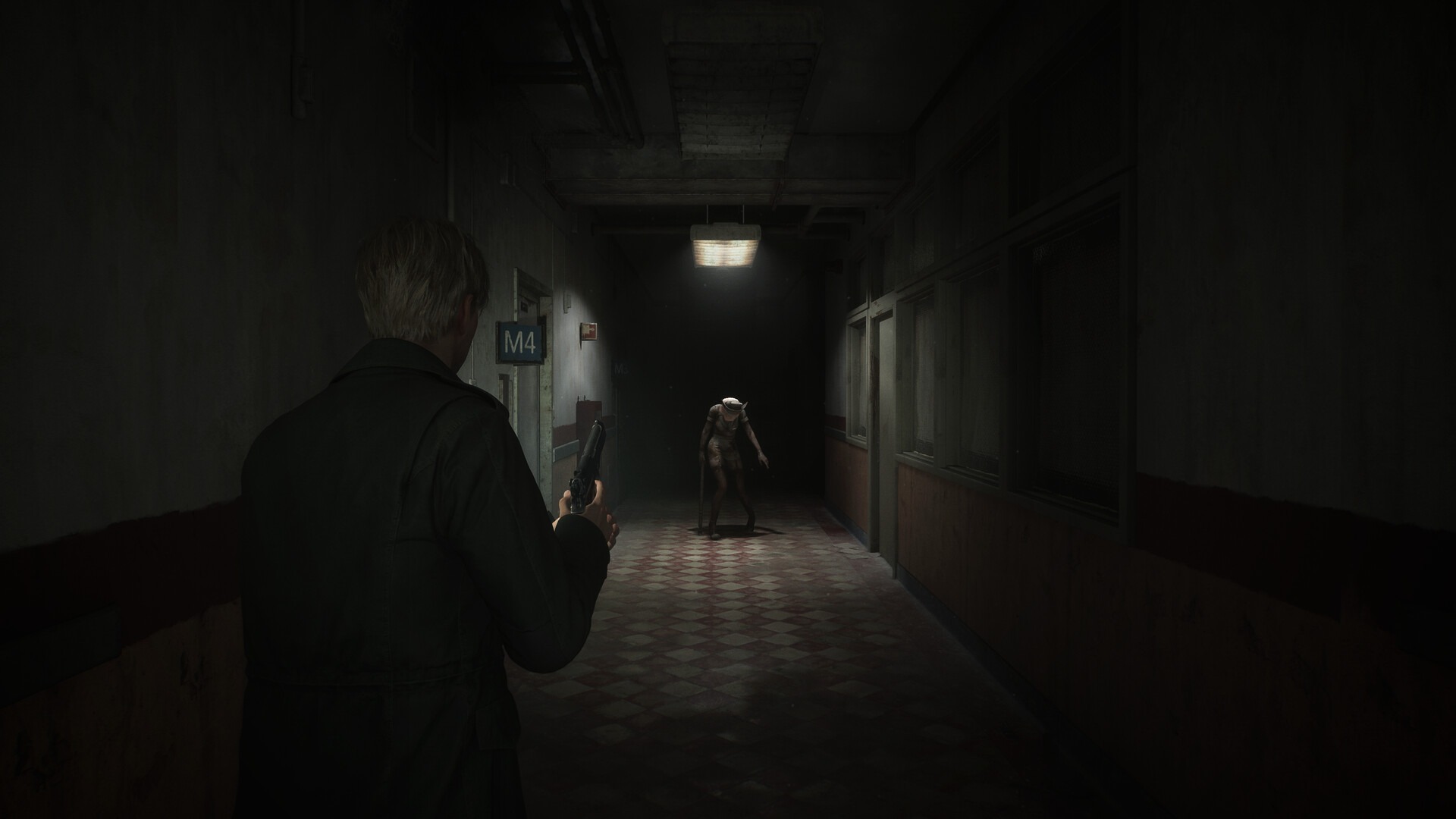The world has never quite known what to do with M. Night Shyamalan. He was called the next Steven Spielberg just three movies into his career, but when critics and audiences realized he didn’t fit into that box, he was relegated to a punchline for more than a decade before bursting back onto the scene and reminding everyone that he’s always been great. But the truth is, the rise and fall and rise again of M. Night Shyamalan was more a problem with the audience than it was the filmmaker. Shyamalan’s always reinventing himself, constantly one step ahead of his time — but he’s always patiently waiting for us to catch up.
Shyamalan burst onto the scene with The Sixth Sense in 1999. A tremendous thriller with an unthinkable twist ending, The Sixth Sense felt like the announcement of a generational talent in filmmaking. And when he followed it up with Unbreakable, a fascinatingly original and inventive take on superheroes years before the world would take them seriously as blockbuster fodder, and Signs, an alien invasion movie deeply grounded in grief and faith, it all seemed to confirm that he was something truly special.
Then it all went wrong with the release of The Village. On paper, The Village feels like a consistent evolution of Shyamalan’s career: another high-concept thriller, this time set in an insular, early American town beset by strange monsters. The Village shares the high-level execution of his craft that helped Shyamalan burst onto the scene, as well as desperately sincere, somewhat over-the-top emotions that mark most of his characters. It’s a perfect, potent mix for an incredibly tense and exceptionally entertaining horror movie.
But its release in 2004 was met with mediocre reviews, and despite some box-office success, it was seen as a commercial disappointment. Audiences expressed intense distaste for the ending’s twist, which revealed that the movie was actually set in the modern day, and the monsters that were tormenting the village were actually just people in costumes trying to hide the townspeople from the technology and violence of the outside world. It was a massive swerve, and one that boomed audiences out of an otherwise enjoyable experience, but the venom directed toward it still felt like it was about more than just the ending, and it certainly shouldn’t have soured audiences on M. Night’s films for the next decade. So, what exactly happened?
One possibility is simply that the ending caused a crisis of expectations. The cultural footprint of The Village was monumental before the movie was even released, with trailers running for it constantly at the height of cable proliferation. In other words, most people in America had been bombarded with images from what was a shocking and incredibly effective ad campaign, but a campaign that advertised something very specific: a monster-movie thriller about a small early-American village plagued by unexplainable monsters. And the movie seemed to deliver on all of that, right up until the reveal that none of it was real, which sent audiences out of the theater feeling fooled rather than thrilled.
Another contributing factor: Shyamalan was, at that point in his early career, probably a little too talented for his own good. A lesser filmmaker might be able to get away with a rug pull as big as the final note of The Village, but M. Night cannot, because he simply builds a world that feels too complete and interesting. His little town seems so engrossing and complete, it’s the kind of world (with the kind of horror) that would be the setting of an eight-episode miniseries today. Shyamalan, however, knows exactly what to focus on and what to ignore as he builds the dread and suspense of this world. Every second of The Village is full of clever details that make its world feel lived-in: Whether it’s tiny glances between characters, the camera catching glimpses of hushed conversations, or just little eccentricities of set design, it all adds up to a full and complete world. And all of that collapsing into a single twist feels like a small betrayal of both the characters and the audience.
Sure, it’s easy to look back now, 20 years later, and see what he was saying: That twist makes the movie a sensational but moving look at the walls the powerful can put up around people, and the ways that those in control of a society can manipulate the narrative so much that real life fades away entirely. It’s essentially a movie about the ways societies can have wool pulled over their eyes that blinds them to the outside world, keeping people scared of fake boogeymen to shield them from real problems. It’s the kind of storytelling trick that opens the door to a hundred metaphoric possibilities, but in the America of 2004, it’s hard not to see it as a salient view of the war in Iraq, a sensationalized invasion stirred up by weapons that turned out to be no more real than The Village’s monsters.
It’s a fascinating and effective metaphor, but it’s also one that feels better to think about years after viewing the movie rather than moments. In the immediate aftermath of watching The Village, even after seeing it quite a few times, it’s a little hard to shake the disappointment of not getting to see the conclusion you were conditioned to expect. A world as richly detailed as this one deserved at least a little more follow-through. Of course, none of this disappointment makes The Village a bad movie, but it is easy to see how that feeling could fester into a cultural backlash against Shyamalan himself, and especially a wariness about getting burned again by his twists. But even that doesn’t seem to quite account for just how bitter and heated the vitriol against Shyamalan got, or how totally he fell out of favor.
There’s undoubtedly some of the casual racism that plagued the early 2000s. After all, you couldn’t throw a rock without hitting someone mispronouncing Shyamalan’s name as a supposed punchline, and yet the joke still persisted for more than a decade. But it wouldn’t be accurate to say that was the only thing that toppled Shyamalan’s cultural high standing; instead it feels more like a cruel additive, an extra kick to a director who’d fallen out of favor.
With 20 years of hindsight, it seems more fitting to say the reversal on Shyamalan was the canary in the coal mine for a broader cultural shift toward cynicism that plagued the late-Bush and early Obama years in America. This was a time when earnestness was despised, and the greatest possible sin you could commit in public was caring. Not just caring too much, but caring about anything at all; apathy became the virtue of the decade. It was a time dominated by insults as comedy, and where the highest form of cultural signifier was quickly degrading any of the pop culture properties you needed the world to know you were better than. With no real malice intended toward Trey Parker and Matt Stone, let’s call these the South Park years.
There is, perhaps, no mainstream Hollywood filmmaker in the last 30 years more poorly suited to those South Park years than M. Night Shyamalan. Shyamalan is a born storyteller, and in pursuit of that, he’s often more interested in stories that feel right, rather than smaller concerns like realism or even narrative finiteness. Through this lens, it’s easy to see what rubbed people the wrong way about The Village. He’s nearly confrontational in the way he presents the internal lives of his characters and externalizes them as the conflict of his movies. Shyamalan’s preferred method of storytelling is often to shape events to emotions, rather than the other way around.
How else are we supposed to take it when, in The Sixth Sense, he presents us with a picture of regret from the eyes of a dead man? There, Shyamalan suggests that love and grief are such loud emotions that they echo out from beyond the grave, letting those who feel them shape the world and speak in ways few can see or hear. In Signs, Shyamalan uses an alien invasion of Earth to explore concepts as personal as loss or a crisis of faith, two deeply internal conflicts that he lets play out as an intergalactic allegory. If he’s writing a story exploring what the deepest expression of love is and whether greater love is inherently sacrificial or selfish, he might do it using the end of the world, like in Knock at the Cabin. And if Shyamalan wants to tell a story about the fragility of our bodies, or the melancholy mix of pain and beauty of parents watching children grow up only for children to watch their parents wither, he’s going to do it by throwing a bunch of strangers on a beach that makes them old.
This particular method of fitting worlds to their stories was definitively out of step with the era of culture that prized realism above almost everything, bringing us grim superhero movies like The Dark Knight and a version of Captain America that was more interested in being a character from All the President’s Men than Marvel’s answer to Superman. In a phrase nearly unthinkable in the South Park era, Shyamalan’s movies are more about chasing a vibe than anything else, and he would never let something so boring as a plot hole ruin the feeling he’s trying to create. His films are full of huge emotions unhidden by the veils of politeness this era suggested were supposed to mask bigger feelings in pop culture.
While Shyamalan didn’t stop working in the wake of The Village, it did kick off an era where his movies were met with cultural and critical vitriol. Ultimately, he got relegated to the meme status of a twists-only director with a string of commercial flops, which let us lose sight of his considerable talents as a filmmaker and many excellent works. Perhaps unsurprisingly, this is also the segment of his career that’s most (and least, in the case of The Last Airbender) deserving of reexamination.
Instead, he seems to have dived into experimentation, both good and bad. Perhaps the most interesting movie of this period, and the most directly confrontational to his audiences, is Lady in the Water, a thriller that deals directly with the idea of a writer struggling with his cultural reception and his earnest writing brushing up against a culture of cynicism. And in case you needed a finer point on it, M. Night plays the writer himself. It’s a fascinating and unique movie, but also one that feels like Shyamalan’s most definitive statement: He’ll always be happiest and at his best when he’s following his own whims and making movies the way he wants to.
From there it feels like Shyamalan frees himself to follow all kinds of impulses. Some are goofy big swings like The Happening, an apocalyptic thriller that feels like it’s blurring the lines between drama and comedy; star-driven blockbusters like After Earth; or his ill-fated The Last Airbender movie (which represents the one truly unwatchable entry in his filmography). Each of these movies, successful or not, is unmistakably Shyamalan’s, filled with gorgeous photography and framing, intimate close-ups, and dialogue that’s almost uncomfortably honest about emotion and each piece’s themes.
Each of the movies during this period feels like Shyamalan putting together the pieces of who he’s going to be as a filmmaker and storyteller. This means none of these movies on their own make for the best viewing of Shyamalan’s career, but they are fascinating to go back to and see him explore the details of techniques he might pull out for just one sequence in a later movie. During this time he played around with supernatural mystery movies, action blockbusters, end-of-the-world horror, and even found footage, each time clearly finding little tricks and tools that he would put to use later.
The first film that felt like Shyamalan put all of these experiments together was Split. It’s no coincidence that Split was also Shyamalan’s reemergence in Hollywood and his first smash hit since The Village. With Split, Shyamalan created for himself a perfect storm for his talents. It’s a straightforward thriller that lets him leverage his impeccable filmmaking to create something genuinely scary. The early scenes of the girls being held in captivity by James McAvoy are genuinely unsettling, in large part because Anya Taylor-Joy’s expressions of wide-eyed terror are an excellent fit with Shyamalan’s love of huge emotions in ultra close-up. Meanwhile, the scenes of The Beast chasing Casey (Taylor-Joy) are among the most horrifying in any movie of the 2010s. Shyamalan even finds the perfect spot to hide his earnestness here, inside the 24 different personalities of Dennis, each delicately and deliciously played by McAvoy, exactly on the line between scary and goofy.
Split is likely, outside of his forays into true blockbuster filmmaking, the most conventional movie of Shyamalan’s career and a clear bid for mainstream success — and, notably, Shyamalan’s most cynical effort ever, as it was more carefully calculated for audience and studio appeal than any of his other films. First and foremost, its ending stinger reveals it’s a backdoor franchise play for Shyamalan’s very own superhero universe. It’s also perhaps his most overt horror film, a clear play at broader appeal, and a fairly cheaply made movie that came complete with a couple of (at the time) almost A-list stars. Of course, Shyamalan’s most cynical film is still full of more sincerity than most directors could muster, something that becomes clear with Split’s resolution, revealing that the pain Casey and Dennis share in their history marks her safe from The Beast’s wrath. But whether his approach was cynical or not, the movie was a smash hit, and clear proof to studios that Shyamalan could still tap into the box-office appeal he had with his first few movies.
It also probably doesn’t hurt that this breakthrough happened exactly at the tail end of America’s cynical era, when the pendulum started to swing back toward earnestness again. The arrival of the Trump era brought with it a version of American culture that was more adversarial and idealistic on both sides of the political aisle. A knock-on effect of this change was that caring came back in style. Whether it was caring about everyone’s political opinion or caring about the state of the country, America’s decade of cultural apathy gave way to a new era of opinions. While what that means for the rest of the culture will surely take decades to sort through, what it means for the films of M. Night Shyamalan is that empathy and earnestness are back on the table. And after Split and Glass, so was Shyamalan; the two movies both proved to be massive box-office hits, making him a major player in Hollywood once again. And even better, it’s clear Shyamalan was a little more ready for his star to rise this time.
In the years since Glass, Shyamalan has proven himself to be a far more confident filmmaker than he was before. His experimental period seems to have given him a positively postmodern approach to the concept of genre. In his last three movies, he’s seemed to start with a fantastic high-concept pitch for a thriller, then let his formal talent shape the rest of the movie. Old, for instance, may center on the terrifying concept of being trapped on a beach that’s aging people rapidly, but quickly morphs into simple and tragic family drama. Knock at the Cabin swaps from a hostage thriller to an action movie to an apocalypse movie with each of its acts. Trap takes all this a step further, dancing between an action movie, a heist thriller, and a comedy, sometimes all in the same scene. It even plays with our expectations of M. Night as a writer, pulling in the kind of overly sincere dialogue that Shyamalan often trades in and using it as the voice of Cooper’s “regular guy” disguise.
In many ways, this genre dexterity feels like Shyamalan finding the final evolution of the twists that helped make him famous, then infamous, in the first place. They’re a quiet, clever way to twist his films whenever he feels like it, jumping from one genre to the next on a whim, or flipping expectations whenever a story’s at risk of getting stale.
For as incredible as The Village is, and as well as the twist works in hindsight, it’s hard not to wonder, watching Trap, if today’s version of M. Night Shyamalan would make the movie differently than he did back in 2004. Would the twist come just halfway through, making room for more reveals and an even more incisive look at the idea of how our culture can blind us to the way the world really is? Would we see Ivy venture into the real world and struggle to fit in?
It’s tempting to look at what Shyamalan has done in the eight years since Split’s release and see it as his final form, a filmmaker who’s put all the pieces together and can just make tremendously fun and affecting high-concept thrillers forever. But even that might be drawing too small a box around a filmmaker who’s always found ways to work outside of them. The truth is, M. Night Shyamalan is probably going to keep reinventing himself again and again, always morphing into a different filmmaker without ever losing the earnestness and technical brilliance that makes him unique. And we’re lucky for that fact. The one thing you can say through every iteration of his career, all the highs and lows, is that M. Night Shyamalan has never once made a boring movie. What more could we possibly ask for?















